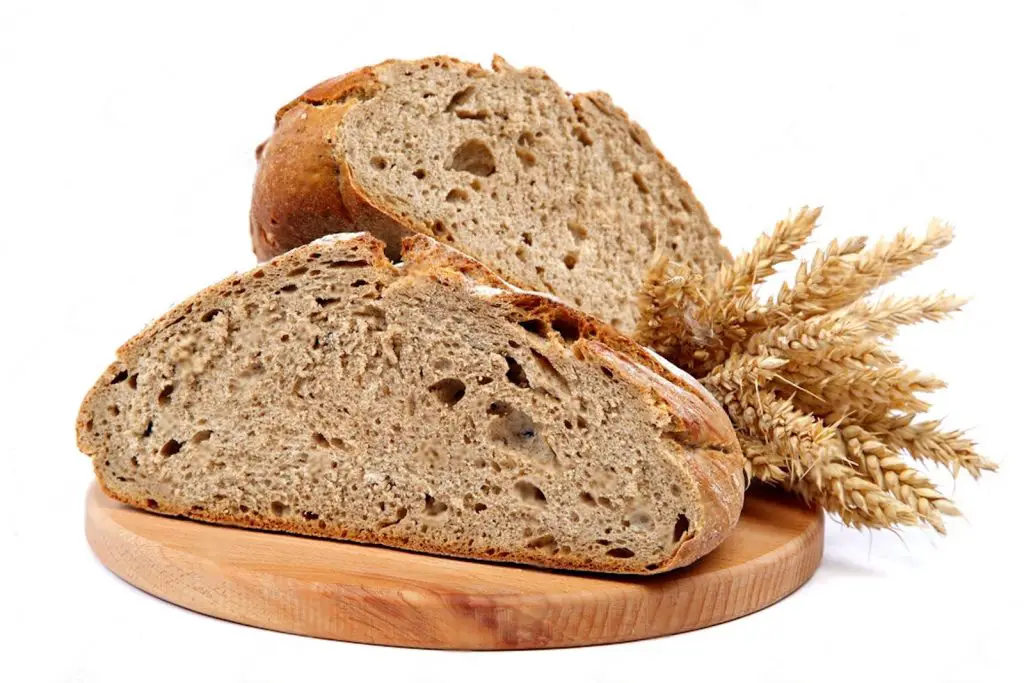
Butternut squash soup is a creamy and flavorful soup made primarily from roasted or cooked butternut squash. Butternut squash is a winter squash with a sweet and nutty flavor, which lends itself well to soups and other dishes. The soup is typically made by pureeing cooked butternut squash with other ingredients to create a smooth and velvety texture. Freezing butternut squash soup is a convenient way to preserve this delicious and comforting dish for later enjoyment.
Here are the easy steps to freeze butternut squash soup:
Step 1: Allow the soup to cool down
After cooking your butternut squash soup, it is essential to allow it to cool down before freezing. Cooling the soup to room temperature before freezing is important for several reasons.
Firstly, allowing the soup to cool helps prevent condensation from forming inside the storage container. When hot soup is transferred directly into a container and sealed, the steam inside can turn into condensation as it cools down. This condensation can contribute to freezer burn, which is the dehydration and oxidation of food caused by air exposure in the freezer. Freezer burn can lead to changes in texture, taste, and overall quality of the soup.
Secondly, cooling the soup allows for safer handling and storage. Placing hot soup in the freezer can raise the temperature inside the freezer and potentially compromise the quality of other frozen items. Additionally, putting hot soup directly into the freezer can create an uneven temperature distribution, resulting in slower freezing and potential microbial growth.
To cool the soup efficiently, transfer it from the cooking pot into a shallow, wide container. This helps increase the surface area and promotes faster cooling. You can also place the container in an ice bath or place it in the refrigerator for a quicker cooling process.
Step 2: Portion the soup
Once your butternut squash soup has cooled down to room temperature, the next step is to decide whether you want to freeze the entire batch or divide it into individual portions. Portioning the soup before freezing offers several advantages and allows for greater convenience when it comes to thawing and enjoying the soup later.
Freezing individual servings of butternut squash soup is a practical choice for several reasons. Firstly, it provides flexibility in portion sizes. By dividing the soup into individual portions, you can easily thaw and enjoy smaller servings based on your needs. This is particularly useful if you live alone, have varying appetite levels, or prefer to enjoy the soup as a quick and easy meal.
Furthermore, freezing in individual portions reduces the need to thaw the entire batch of soup. If you freeze the entire batch together, you would have to thaw and reheat the entire container, even if you only want a small portion. Portioning the soup allows you to thaw and heat only the amount you need, minimizing waste and ensuring that the remaining soup stays frozen for future use.
When it comes to choosing the containers for freezing, it is important to use freezer-safe options. Freezer-safe containers are designed to withstand low temperatures and prevent freezer burn. Look for containers made of plastic or glass that are labeled as freezer-safe.
Alternatively, you can use resealable freezer bags specifically designed for freezing. These bags are convenient as they allow you to lay them flat, saving space in the freezer. Be sure to choose bags made of thicker, durable plastic that are designed for freezer use.
Can I freeze butternut squash soup in glass containers?
Yes, you can freeze butternut squash soup in glass containers. Just make sure to choose freezer-safe glass containers that can withstand the freezing temperatures without cracking. Leave sufficient headspace in the container for expansion, and allow the soup to cool completely before freezing to prevent thermal shock to the glass.
Step 3: Fill the containers or bags
After deciding to portion your butternut squash soup for freezing, the next step is to fill the containers or bags with the soup. This process should be done carefully to ensure proper storage and minimize the risk of spills or compromised sealing.
When filling the containers or bags, use a ladle or a large spoon to transfer the soup. Take care not to overfill them, as liquids expand when frozen. It’s important to leave some headspace at the top of the containers or bags to allow for expansion during freezing.
Leaving about an inch of space at the top of the containers or bags serves a few purposes. Firstly, it provides room for the soup to expand as it freezes. When liquids freeze, they expand, and if the containers or bags are filled to the brim, there is a higher chance of the contents pushing against the lids or causing leaks. Leaving the recommended inch of space allows the soup to expand without compromising the integrity of the container or bag.
Secondly, leaving some headspace helps prevent spills during the freezing process. As the soup freezes, it may expand and push against the lids or the sides of the containers. If there isn’t enough room for expansion, it can result in messy spills in your freezer. By leaving sufficient headspace, you reduce the risk of spills and make the freezing process cleaner and more manageable.
Step 4: Seal the containers or bags
Once you have filled the containers or bags with your butternut squash soup, the next step is to seal them properly. Proper sealing is crucial for maintaining the quality and preventing freezer burn, which can negatively impact the taste and texture of the soup.
If you are using containers, ensure that the lids fit securely and tightly. This helps create an airtight seal, preventing air from entering the container and coming into contact with the soup. Air exposure is one of the main culprits of freezer burn, as it can cause moisture loss and oxidation of the soup. By securely placing the lids on the containers, you minimize the chances of air reaching the soup and ensure its freshness during freezing.
For resealable freezer bags, the process is slightly different. Before sealing the bags, squeeze out as much air as possible from them. The presence of excess air inside the bags can contribute to freezer burn. To remove air from the bag, carefully press it while sealing, starting from the bottom and working your way up to the top. This helps create a vacuum-like effect, reducing the amount of air trapped inside the bag.
After squeezing out the air, seal the bags tightly. Some freezer bags come with zip-lock mechanisms, while others may require using bag clips or twist ties to secure them. Ensure that the closure is tight and secure to prevent any air from entering the bag.
Proper sealing is vital because it creates a barrier between the soup and the freezer environment. It helps maintain the soup’s quality by preventing air exposure, which can lead to freezer burn. Freezer burn occurs when moisture in the food evaporates and crystallizes, resulting in dry, discolored patches and an off-flavor. By sealing the containers or bags tightly, you safeguard the butternut squash soup from these undesirable effects.
Remember to wipe any excess soup or moisture from the rims or edges of the containers or bags before sealing them. This ensures a clean seal and minimizes the risk of leaks or contamination.
Step 5: Label and date
After sealing the containers or bags of butternut squash soup, it’s important to label each one with the contents and the date of freezing. This simple step may seem insignificant at the moment, but it can greatly benefit you in the future by providing important information about the stored soup.
Labeling the containers or bags with the contents allows for easy identification. As time passes, it can be easy to forget what is stored in each container, especially if you have multiple items in the freezer. By clearly labeling them as “Butternut Squash Soup,” you can quickly locate the desired item without the need to guess or open multiple containers.
Additionally, labeling the date of freezing is crucial for keeping track of storage time. By knowing when you froze the soup, you can ensure that you use the oldest frozen soup first. This practice promotes proper rotation and prevents the soup from being stored for too long, which can affect its quality and flavor.
Freezing is a preservation method, but it doesn’t stop the aging process entirely. Over time, frozen foods may experience changes in texture, taste, and nutrient content. By dating the containers or bags, you can monitor the duration of storage and prioritize consuming the oldest soup first. This helps minimize waste and ensures that you enjoy the soup at its best quality.
When labeling, use a permanent marker or freezer-safe labels that won’t smudge or fade over time. Write the contents and the date clearly on each container or bag to avoid any confusion. If you’re using resealable freezer bags, it’s best to label them before filling them with the soup to prevent any smudging of the ink.
Step 6: Store in the freezer
After properly packaging and labeling your butternut squash soup, the final step is to store it in the freezer. Proper storage in the freezer is essential to maintain the soup’s quality and ensure it remains safe for consumption.
When choosing a spot in the freezer to store the soup, look for a flat surface where the containers or bags can be placed without being crushed or damaged. This helps maintain the integrity of the packaging and prevents any leaks or spills. If you’re using freezer bags, you can lay them flat to save space and allow for easy stacking.
It’s crucial to ensure that the temperature of your freezer is set to 0°F (-18°C) or below. Freezing at this temperature or lower is important for food safety and preservation. At these temperatures, the growth of bacteria and other harmful microorganisms is significantly slowed down, reducing the risk of foodborne illnesses.
A freezer set at the appropriate temperature also helps maintain the quality of the butternut squash soup. The lower temperature preserves the flavors, textures, and nutritional content of the soup for an extended period. It also helps prevent the formation of large ice crystals that can negatively impact the soup’s texture.
When placing the containers or bags in the freezer, arrange them in a way that allows for proper air circulation. Avoid overcrowding or blocking the freezer vents, as this can hinder the circulation of cold air, leading to uneven freezing and potential temperature fluctuations.
Additionally, it’s a good practice to keep the butternut squash soup away from strong-smelling foods in the freezer to prevent flavor transfer. You can use freezer dividers or separate shelves to create distinct areas for different types of foods.
How long can butternut squash soup last in the freezer?
Butternut squash soup can last in the freezer for approximately 3-4 months while maintaining its quality. Freezing helps preserve the soup by slowing down the growth of bacteria and maintaining its flavors and textures. It is recommended to consume the frozen butternut squash soup within this timeframe for the best taste and overall enjoyment.
Other related questions
How do I defrost butternut squash soup?
To defrost butternut squash soup, there are two recommended methods. The first method is to transfer the soup from the freezer to the refrigerator and let it thaw overnight. The second method is to use the defrost setting on a microwave, heating the soup in short intervals and stirring occasionally until fully thawed. Avoid defrosting at room temperature to prevent bacterial growth.
How long does it take for frozen butternut squash soup to thaw in the refrigerator?
The time required for frozen butternut squash soup to thaw in the refrigerator can vary depending on the container’s size and the temperature of your refrigerator. Generally, it takes about 24 to 48 hours for the soup to thaw completely in the refrigerator. It’s best to plan ahead and allow sufficient time for thawing before you intend to serve the soup.
Can I refreeze butternut squash soup?
Refreezing butternut squash soup is generally not recommended due to potential quality and safety concerns. When soup is thawed, the texture and flavor may be altered, and repeated freezing and thawing can further degrade its quality. Additionally, each thawing cycle increases the risk of bacterial growth, so it is advisable to consume the soup once it has been thawed and avoid refreezing it for optimal food safety.
How do I know if the butternut squash soup has gone bad after being frozen?
To determine if frozen butternut squash soup has gone bad, several signs can indicate spoilage. These include an off smell, unusual texture, mold growth, or discoloration. If the soup exhibits any of these characteristics, it is best to discard it to avoid the risk of foodborne illness and ensure your safety. When in doubt, it is always recommended to err on the side of caution and prioritize food safety.
Can I freeze butternut squash soup that contains dairy or cream?
Yes, you can freeze butternut squash soup with dairy or cream. However, keep in mind that the texture of the dairy-based ingredients may change slightly upon thawing. It’s best to stir the soup well after thawing to help incorporate any separation that may have occurred.
Can I freeze butternut squash soup with added spices or seasonings?
Absolutely! Freezing butternut squash soup with spices and seasonings is perfectly fine. In fact, freezing can help enhance the flavors as the ingredients have more time to meld together. Just be sure to taste and adjust the seasonings if needed after thawing.
Are there any special precautions to take when freezing butternut squash soup with a vegetable broth base?
When freezing butternut squash soup with a vegetable broth base, it is important to ensure that the broth is completely cooled before freezing. This helps maintain the soup’s quality and prevents potential thermal shock to the container. Follow the same steps for freezing and storing as mentioned in the main article.
Can I freeze butternut squash soup that has been garnished with toppings, such as croutons or herbs?
It is generally recommended to freeze butternut squash soup without the garnishes. Toppings like croutons or herbs can become soggy or lose their texture when frozen and thawed. It is best to add the toppings fresh when serving the soup after it has been thawed.








